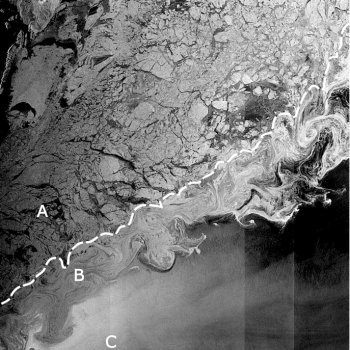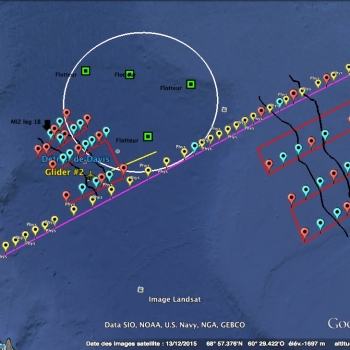Science aboard the CCGS Amundsen: Cruise plan
Research icebreaker expedition
During the icebreaker expedition aboard the CCGS Amundsen, we are going to investigate the impact of the progression of ice melt and the resulting changes in snow and sea ice properties on the phenology of phytoplankton.
Measurement and sampling work aboard the CCGS Amundsen
The campaign will consist of two parts:
The first leg (Leg1A) will start on June 3 in Québec City and end on June 23 in Qikiqtarjuaq, Nunavut, for a total of 21 days. We will have 7 days of transit from Québec to our research area. This will give us plenty of time to finalize the installation and refine our science plan using the latest ice information. We expect the Marginal Ice Zone (MIZ) to be closer to Greenland during leg 1A.
Between day 8 and day 16, we will transect perpendicularly across the MIZ from open water to sea ice and back again as many times as possible. For each transect we will have a Full Station in open waters (C) (where the phytoplankton signal is present), a Full station in the MIZ (B) and an ICE station (A) (ICE station corresponding to a Full station without any trolling operations) at the very minimum.
In the following satellite picture, you can visualize the area:
You will also find the schematic cruise track below. The red marks are full stations, The blue marks are basic stations and the yellow marks are physical stations. During that time, we will deploy drifting sediment traps on the ice (to be recovered while on our way to Iqaluit).
Between day 17 and 21 we will transect across the entire width of Baffin Bay from Greenland coast to Qikiqtarjuaq. The transect will be primarily dedicated to the assessment of the physical environment. We are planning on doing 35 Stations along the transect. Stations will not be evenly spaced in order to cover interesting areas with a higher resolution.
Similar to the smaller transects, we will do one Full station in Open waters, one Full station in the MIZ and one Full station in the Ice. We are also planning on adding basics stations whenever possible.
The second one (Leg 1B) will start on June 23 in Qikiqtarjuaq and end in Iqaluit on July 14 for a total of 21 days. During this part of the cruise, we will transect across the Marginal Ice Zone from solid sea ice to open waters as many times as possible and follow the same pattern as during Leg 1A. On the schematic, the number of the transects is only indicative. During Leg 1B we will also deploy one glider and 4 BioArgo floats.

